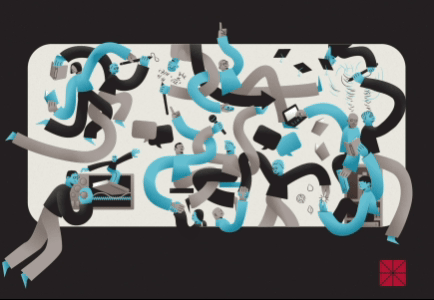California was built by people dedicated to hard work, innovation, family and community. A large number came from other countries or poor backgrounds: sharecroppers from the South, campesinos from Mexico, people fleeing communism and poverty in Asia, escapees from Hitler’s Europe, or Okies and others fleeing the Dust Bowl.
This proud legacy is threatened. California has now taken on an increasingly feudal cast, with a small but growing group of the ultra-rich, a diminishing middle class, and a large, rising segment of the population that is in or near poverty. Indeed, amid some of the greatest accumulations of wealth in history, California has emerged as a leader in poverty. Adjusted for costs, California’s overall poverty rate is the highest in the country, according to the U.S. Census Bureau.
This essay is excerpted from a research brief published by the Center for Demographics and Policy at Chapman University. The full report is here.
The most fundamental threat to the middle class in California lies with the state’s extremely high cost of living, which has largely been caused by unprecedented house price increases relative to household incomes. More than 80% of the higher cost of living in California is the result of higher housing costs.
What is the impact of rising costs on everyday Californians? We set out to answer this question by looking at the real-world household finances of different groups within the state. Our Chapman University research team identified eight broad California “personas” that we can all relate to. We looked at diverse groups of people who vary by whether they live inland or on the coast, by age, by how many children they are raising, and by income level.
Our goal was to answer a simple question: How much income do people have after paying taxes and the essential expenses required for a reasonably expected standard of living at their income level? The answers raise deep concerns about the sustainability of the California Dream. To a remarkable extent, Californians simply cannot afford the expenses necessary to support the standard of living expected at their income level. This has consequences that affect expenditures and lifestyle. Californians with above-average incomes might underfund their savings. Retirees might cut back on healthcare and transportation spending. Lower-income people might share housing costs with other households. Households with children might avoid costly childcare by relying on friends or relatives, or even leaving older children unsupervised.
Many Californians turn to consumer debt to plug the gap. Data from the Federal Reserve Bank of New York on non-mortgage debt shows that Californians have increased their percentage of after-tax income dedicated to consumer debt service to close to what it was at pre-recession levels. This has forced many people into lower standards of living and heavy borrowing to survive financially. We examined the pre-tax incomes, the spending habits necessary to support a reasonably expected standard of living, and the resulting hypothetical surpluses or deficits in eight cases, which we call personas.
Our results are based on statistics published by broad data collection sources, such as the MIT Cost of Living Calculator and the Bureau of Labor Statistics (BLS) Consumer Expenditure Survey. We also used secondary research on specific areas of expenditure from topic-specific sources. Finally, we incorporated interviews with individuals and families about expense levels they are experiencing in the real world. We placed greater weight on these “real world” numbers. The accompanying chart shows the percentage of after-tax income each spending category represents for each of the different personas. Only two of the personas would have enough income for their expected standard of living: the upper 1%, and recent college graduates with professional degrees and without children to support.
For our other personas, hypothetical spending exceeds after-tax income from 1% (for midlevel executives with $230,000 in pre-tax household incomes) to 53% for coastal service line workers. Six of the eight personas have negative hypothetical income, which can be as high as $21,017 for lower income coastal service workers.
Housing, not surprisingly, is the highest expense for all personas, ranging from 70% of after-tax income for retirees to 36% for lower income people who share household expenses with other families. Transportation is the next highest expense, as a percentage of after- tax income, for most others.
Using our rough estimates, it appears that many Californians have a deficit every month relative to the expected standard of living. Many often simply “do without.” Increasingly little of California’s population is “living the dream;” even fewer are living it without financial anxiety.
Joel Kotkin is the R. Hobbs Presidential Fellow in Urban Futures at Chapman University and the director of Chapman’s Center for Demographics and Policy. Marshall Toplansky is clinical assistant professor of management science at Chapman’s Argyros School of Business and Economics and research fellow at the Hoag Center for Real Estate and Finance.





